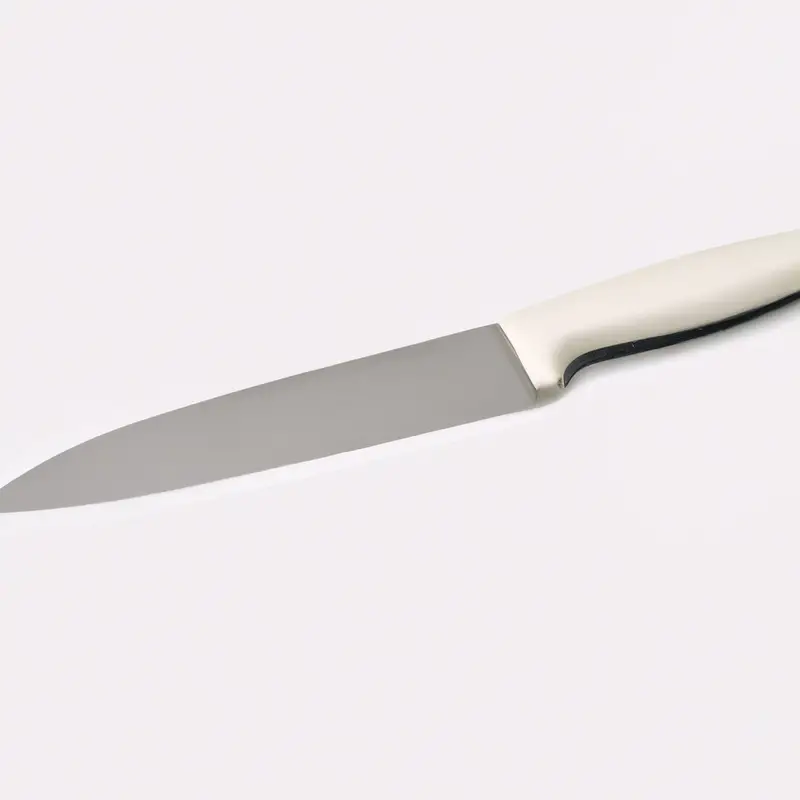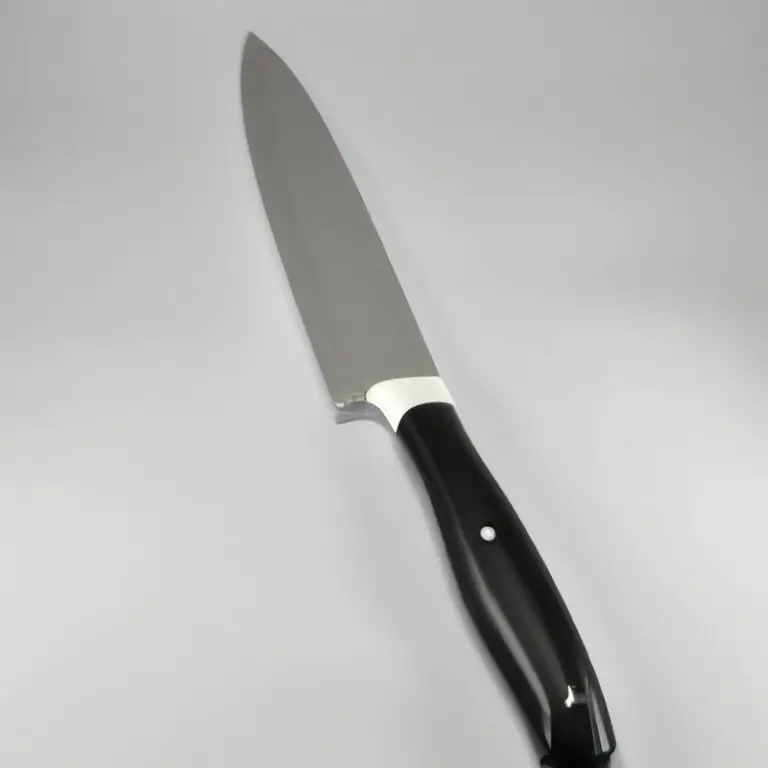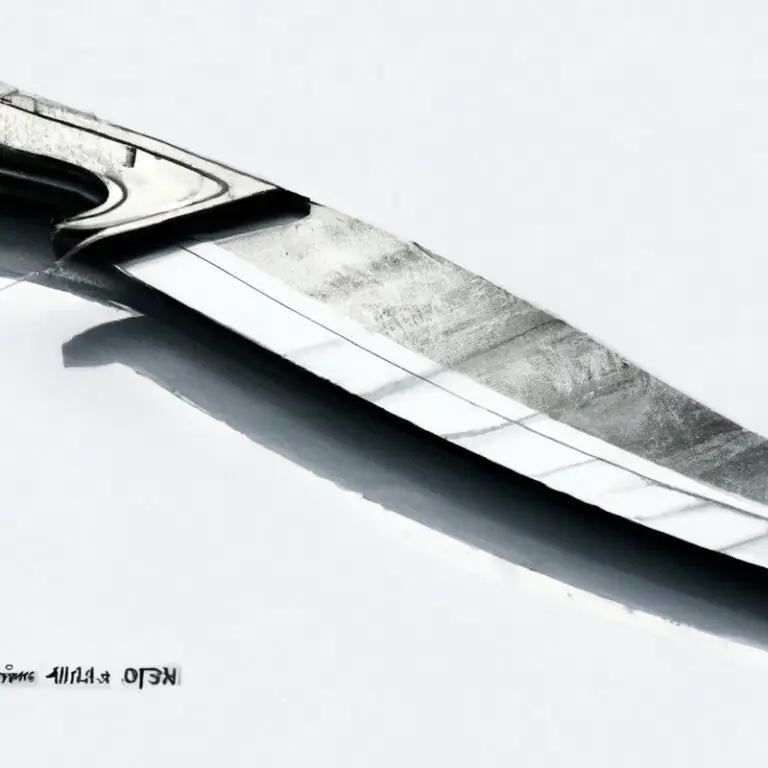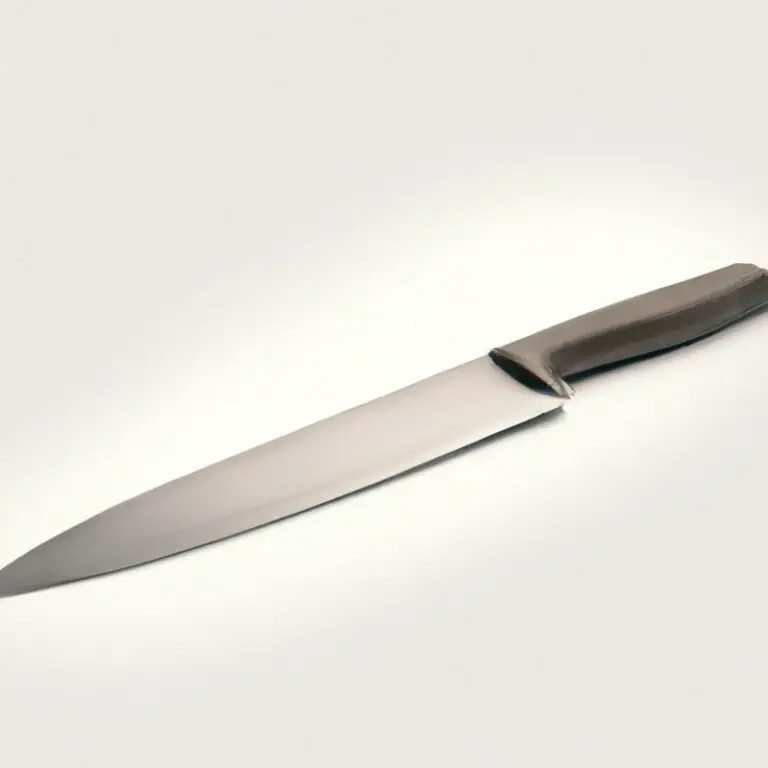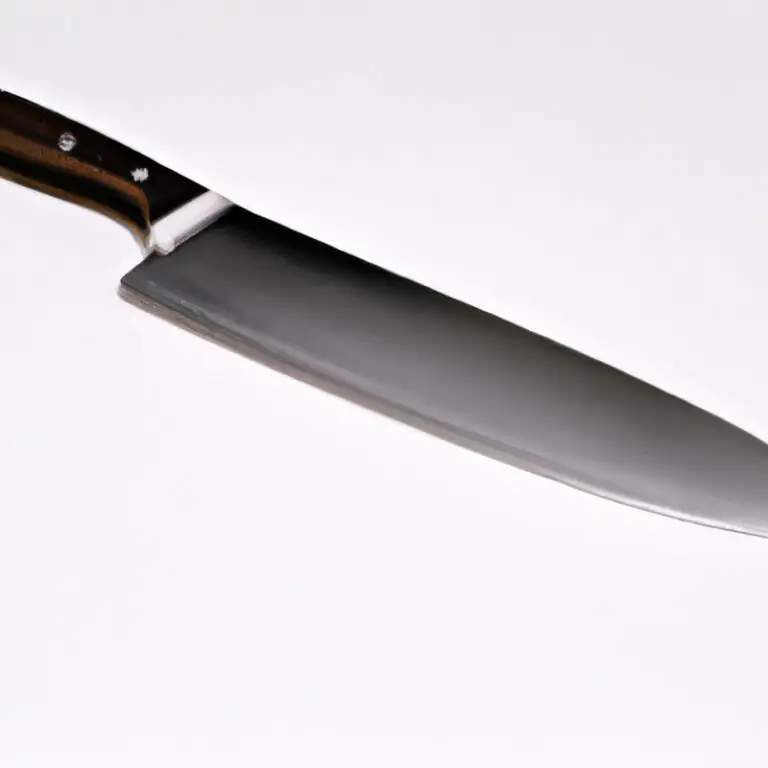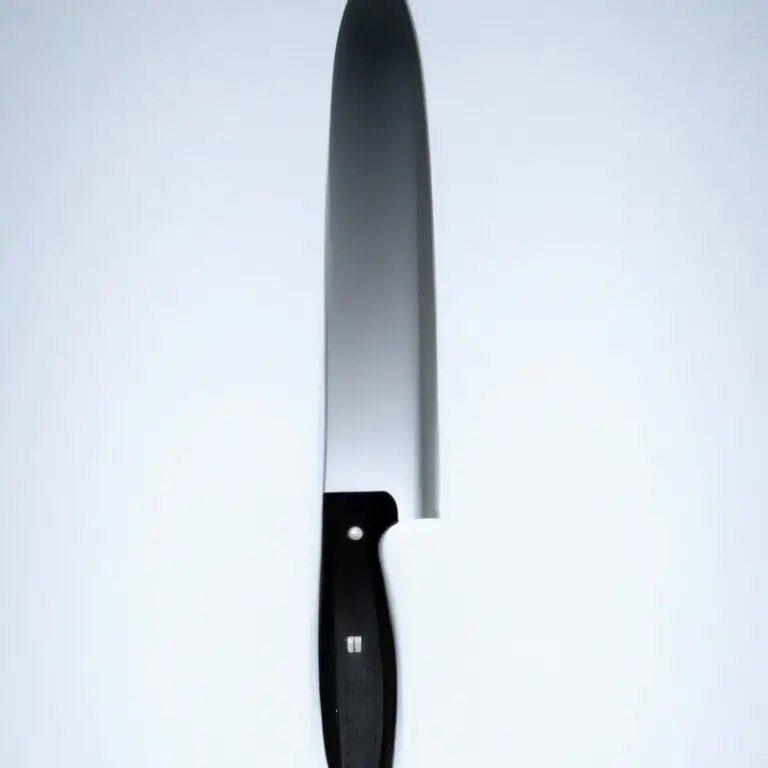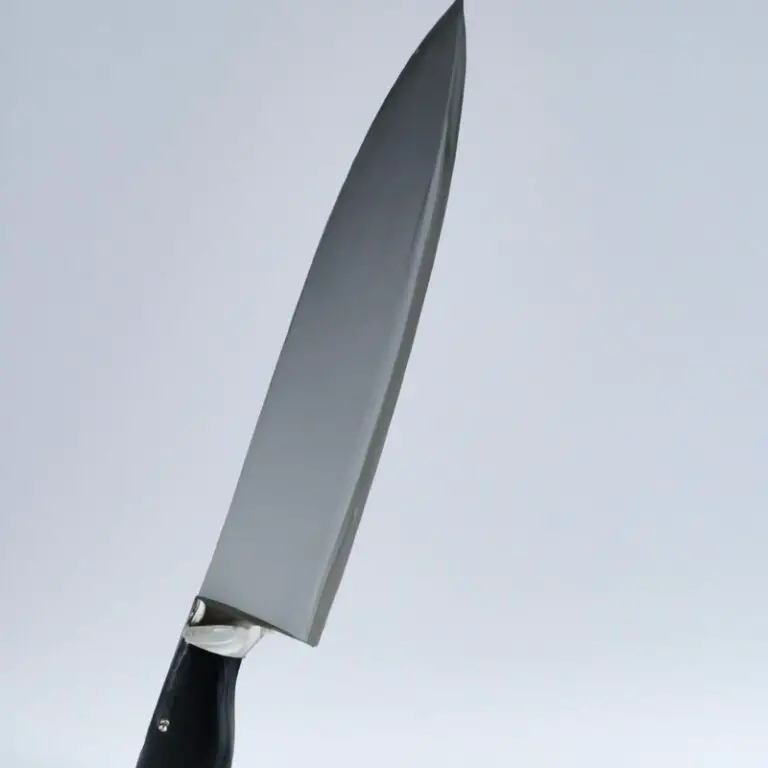How To Properly Hold a Chef Knife For Mincing? Slice It Right!
Key Takeaways:
- Grip the handle firmly with your dominant hand and wrap your other hand around the blade for stability when mincing with a chef knife.
- Keep your fingers curled in towards your palm to avoid accidental cuts while mincing with a chef knife, and ensure the blade stays in contact with the cutting board throughout.
- Use a rocking motion when mincing with a chef knife, lifting the blade slightly with each stroke to create a consistent texture.
- Practice good knife technique to minimize the risk of injury and improve your mincing skills with a chef knife.
Do you struggle with inconsistent results when mincing with a chef knife? It could be due to improper holding techniques.
As a professional chef, I have seen many home cooks struggle with mincing simply because they are not holding the knife correctly.
In this article, I will guide you through the basics of holding a chef knife for mincing, understanding the anatomy of a knife, essential knife skills, and hand placement. You will also learn how to choose the right chef knife for your mincing needs, avoid common mistakes, and reduce hand fatigue while holding a knife.
So, let’s chop right in!
| Step | Instructions |
|---|---|
| 1 | Hold the handle of the knife firmly with your dominant hand. |
| 2 | Place your thumb and index finger on the handle, right where it meets the blade. |
| 3 | Curl the rest of your fingers around the handle for support. |
| 4 | Place your other hand on top of the blade to stabilize it as you chop. |
| 5 | Keep the blade parallel to the board and rock it back and forth to chop. |
The basics of holding a chef knife for mincing: grip and posture
When it comes to mincing with a chef knife, grip and posture are crucial. A proper grip helps you control the knife’s movement while reducing the risk of injuries.
Here are some basics to keep in mind:
- Hold the knife handle with your dominant hand, keeping your index finger straight on the spine and placing your thumb on the handle’s opposite side.
- Position your non-dominant hand’s fingertips on the food, keeping them curled under and away from the blade’s path. Avoid holding the food with your fingertips to prevent injuries.
- Stand straight and distribute your weight evenly on both feet. Keep your shoulders relaxed and away from your ears to avoid tension.
- Hold the knife at a 15-20 degree angle to the cutting board and use a rocking motion with the blade to achieve consistent and fine mincing results.
Proper grip and posture are essential for effective and safe mincing. By following these basics techniques, you can master the art of mincing with a chef knife and elevate your cooking skills.
Understanding the anatomy of a chef knife for better grip and control
To properly grip and control a chef knife, it’s important to understand its anatomy. A typical chef knife is comprised of a blade, handle, bolster, and tang.
The blade is usually between 8 and 10 inches long and tapers to a sharp point.
The handle is designed to offer a comfortable and secure grip, while the bolster is the thick part between the handle and blade that helps balance the knife. The tang is the part of the blade that extends into the handle and provides additional stability.
Understanding these components of a chef knife can help you achieve a better grip and control, which is critical for successful mincing.
Essential knife skills for successful mincing
To achieve successful mincing, there are several essential knife skills that you need to master. One of the most important is maintaining a consistent angle and grip while wielding the knife.
You should grip the handle firmly with your dominant hand, keeping your fingers curled around the handle for maximum control.
It’s also crucial to keep your non-dominant hand steady while you are using the knife. This hand should be used to hold the food in place, while your dominant hand holds the blade and does the mincing.
Keep your fingertips tucked under and away from the blade to avoid cutting yourself.
Another important factor is the sharpness of your knife. A dull knife can be dangerous and can make mincing more difficult and time-consuming.
Be sure to sharpen your knife regularly and hone it before each use.
Finally, when you’re mincing, use a rocking motion with your knife to create a consistent, even chop. Keep the tip of the blade always touching the cutting board, and use a gentle pressure to slice through the food.
With these essential skills, you’ll be able to mince like a pro in no time!
How to properly position your non-dominant hand for safer mincing
To properly position your non-dominant hand for safer mincing, place your fingers on top of the food item, with your thumb behind the fingers, resting on the side of the blade. Keep your fingertips tucked in and your knuckles slightly raised to avoid accidental cuts.
This grip allows you to guide the knife and keep it steady while protecting your fingers from the blade.
Avoid curling your fingertips or sliding them in front of the blade as this can increase the risk of getting cut. With practice, this grip becomes second nature, improving your control and accuracy while reducing the chance of injury.
Knife handling techniques for effective mincing with different types of chef knives
Knife handling techniques for effective mincing may vary depending on the type of chef knife being used. For instance, rocking motion is most effective with a Chef’s knife, whereas a Santoku knife requires a back-and-forth slicing motion.
When mincing with a chef knife, hold the handle with a firm grip and position your thumb and index finger behind the blade, whilst wrapping your remaining fingers around the handle.
Your non-dominant hand should be used to steady the food, with fingers slightly tucked under to keep them safe from the blade. For larger ingredients, such as onions or celery, use the rocking technique.
Place the tip of the knife on the cutting board and lift the blade up and down, using the back of the blade as the pivot, then move the knife forward and back in a rocking motion, using your other hand to guide the ingredient.
When working with smaller ingredients, such as garlic or herbs, use a smaller paring knife or a utility knife. Hold the handle with the same grip as you would use for a chef’s knife, but with your fingers further down the blade.
Use a combination of slicing and rocking to ensure an even mince.
Remember to keep the knife sharp and pay attention to the pressure and angle you exert on the blade. It takes practice to hone your knife handling skills, but with patience and attention, mincing can become a breeze.
Sharpening and honing your chef knife for optimal mincing performance
Sharpening and honing your chef knife is crucial for achieving optimal mincing performance. A dull blade can crush ingredients, resulting in uneven textures and inconsistent cuts.
Therefore, it is important to keep your chef knife sharp by sharpening it regularly.
There are two methods to sharpen your chef knife: using a sharpening stone or an electric sharpener. A sharpening stone allows more control and precision when sharpening your knife, while an electric sharpener is convenient and easy to use.
Whichever method you choose, make sure to follow the manufacturer’s instructions carefully.
Honing is the process of realigning the cutting edge of your chef knife. Unlike sharpening, honing does not remove any metal from the blade.
Use a honing steel to keep your blade straight and sharp.
Place the honing steel vertically on a stable surface, and hold the handle firmly with your non-dominant hand. Hold your chef knife at a 20-degree angle and swipe it against the honing steel in a smooth motion, from the base to the tip of the blade.
By sharpening and honing your chef knife regularly, you ensure that it remains sharp and effective for mincing ingredients.
A sharp knife also minimizes the need for excessive hand pressure while cutting and reduces the risk of injury. Remember to keep your chef knife clean and dry after each use, and store it in a safe and dry place to avoid any damage.
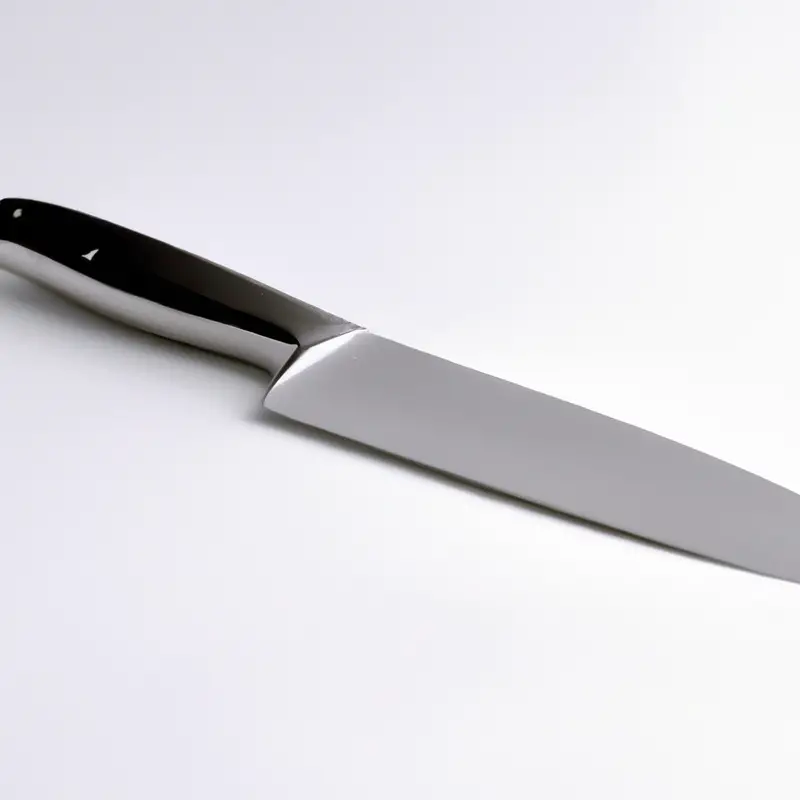
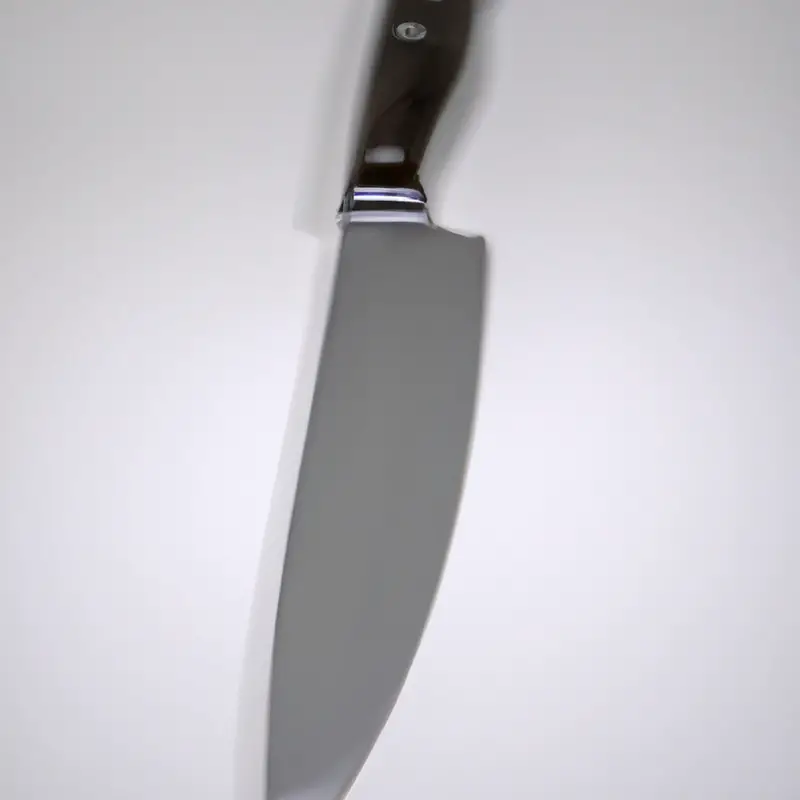
Hand placement and pressure for consistent mincing results
To achieve consistent mincing results, hand placement and pressure are key factors to consider. The hand holding the knife should grip the handle firmly with the three lower fingers, while the index finger and thumb should rest on the knife’s bolster or handle for balance.
The other hand that holds the food to be minced should be positioned in a way that ensures safety and precision.
The fingertips should be tucked under, with the thumb and knuckles pressed against the food to hold it securely, while keeping the fingers away from the knife’s path. When it comes to pressure, it’s important to apply consistent pressure while mincing for uniform results.
The blade of the knife should be in contact with the cutting board and lifted slightly on the backswing to allow the food to be minced smoothly.
Avoid placing too much pressure on the knife as this can injure your hand and affect the final result. By mastering hand placement and pressure, you’ll be able to achieve consistent and perfect mincing results every time.
How to choose the right chef knife for your mincing needs
Choosing the right chef knife for mincing is crucial to achieving optimal results. Here are some things to consider when selecting a chef knife for mincing needs:
- Blade Material: Look for a chef knife with a high-carbon stainless steel blade. It resists rust, corrosion, and staining while maintaining sharpness.
- Blade Length: For mincing, a blade length ranging from 6 to 10 inches is ideal. Longer blades are challenging to control, while short blades may not be sufficient for larger ingredients.
- Blade Shape: A curved blade helps rock the knife back and forth comfortably, while a straight blade offers more precision.
- Blade Thickness: A thin blade makes clean and precise cuts in small ingredients, while a thicker blade can handle larger items.
- Handle Design: Consider the handle’s shape, size, and texture. A comfortable grip with a secure hold and less fatigue over extended use is recommended.
- Weight and Balance: Choose a knife that feels comfortable and well-balanced in your hand. A knife that feels too light or too heavy may affect the mincing technique.
By taking the time to choose the right chef knife according to your mincing needs, you will achieve better results, improve your efficiency, and reduce fatigue while mincing ingredients.
Tips for reducing hand fatigue while holding a chef knife for mincing
Tips for Reducing Hand Fatigue While Holding a Chef Knife for Mincing:
- Choose the right size and weight of the knife that suits you best.
- Use a cutting board that is at the correct height.
- Use a comfortable grip and keep your fingers relaxed.
- Avoid excessive force when chopping or mincing.
- Take frequent breaks to stretch your hand and fingers.
- Use your non-dominant hand to support the food and guide the knife.
- Maintain a proper posture by standing straight and keeping your elbows close.
- Keep your knife sharp to reduce effort and strain on your hand.
- Avoid using a dull or damaged blade that requires more pressure to chop or mince.
- Practice regularly to build strength and improve technique.
Common mistakes to avoid while holding a chef knife for mincing
Avoiding common mistakes is crucial when it comes to holding a chef knife for mincing. Here are some common mistakes to avoid:
- Gripping the knife too tightly: Holding the knife too tightly can cause hand fatigue and may result in inconsistent mincing.
- Holding the knife too far back: Holding the knife too far back can result in less control, making it difficult to mince effectively.
- Not using the correct hand placement: The grip should be evenly spread from the index finger to the little finger. Not having the correct hand placement can lead to accidental cuts.
- Incorrect angle of the blade: The correct angle of the blade should be around 20 degrees. Not having the correct blade angle can result in uneven mincing.
- Chopping too fast: It’s important to mince at a controlled speed to avoid accidents and to achieve consistent mincing.
By avoiding these common mistakes, you can improve your mincing technique and make the process more efficient and safe.
Final Verdict
Mastering the art of mincing is not only about your technique but also about the equipment you use, and more importantly, the way you hold your chef knife. By understanding the anatomy of your knife, you can develop a better grip and control, which reduces the risk of accidents.
Remember, holding a chef knife for mincing requires the correct posture, pressure, and hand placement, along with regular sharpening and honing.
By incorporating these techniques into your daily cooking, you can improve your precision and consistency while reducing hand fatigue, leading to better results and a safer cooking experience. With these tips in hand, you can be confident that you have the skills to hold a chef knife for mincing like a pro.
Happy cooking!

